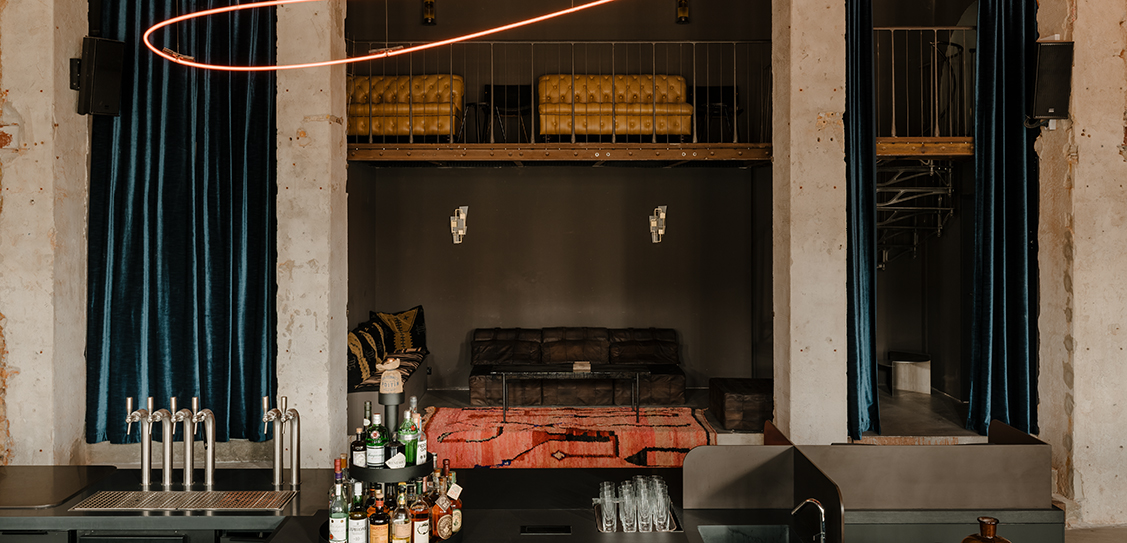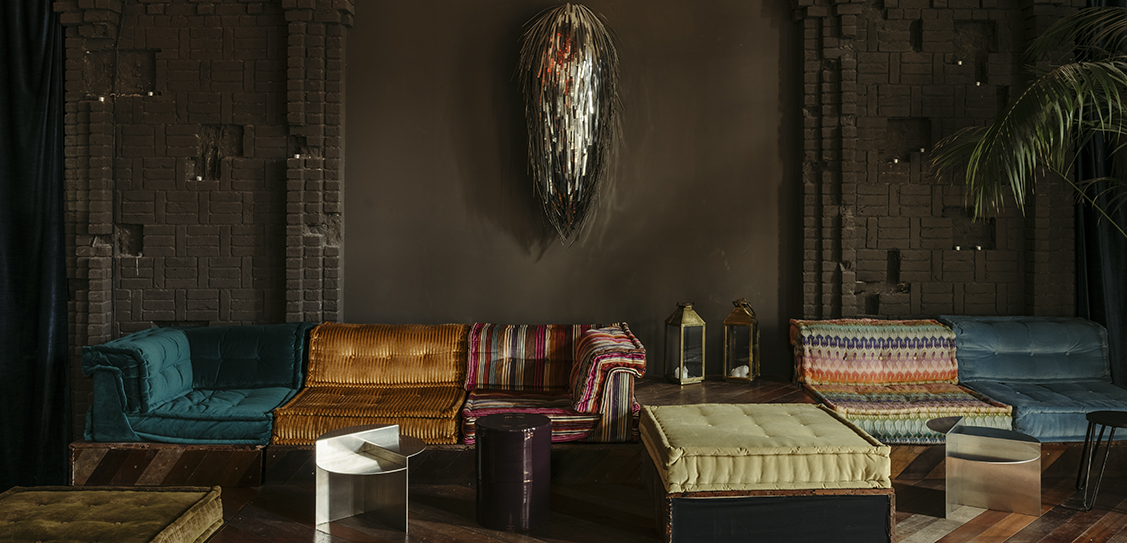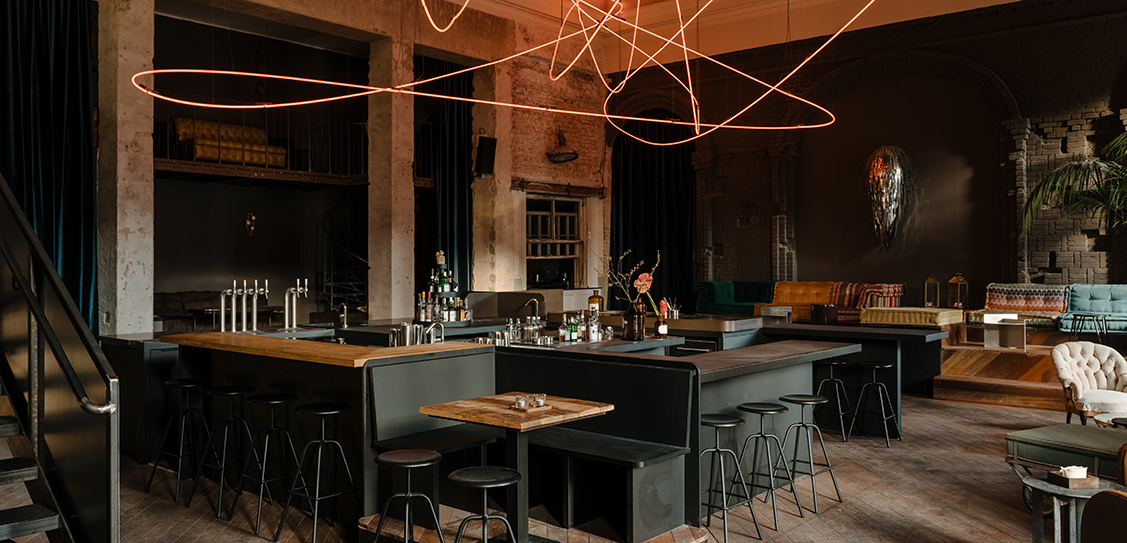Building on its vast adaptive space and eight metre high ceiling, Kink combines contemporary art, modular design and world gastronomy, to offer a both multifaceted and deeply personal visitor experience, in conversation with Kerim Seiler’s large-scale site-specific neon light installation.
Sustaining a constant dialogue with contemporary art and design, the wide room is reinvested through a selection of contemporary installations and works presented throughout the restaurant and bar. At its core, suspended from its high ceiling, Swiss contemporary artist Kerim Seiler’s Spaceknot (Pfefferberg), a large-scale site-specific work consisting of over 100 m of red neon tubes, loops elegantly through the space. Rethinking the void “as his canvas,” the artist transforms what appears to be a two dimensional twisted knot into a multidimensional, space-embracing sculpture. The contrasting glow of its interconnected segments plays with the architectural scale of the room, thereby creating an all-inclusive immersive atmosphere.
In constant conversation with the work, the post-industrial atemporal setting combines classic and vintage elements with contemporary design features and objects. Separated into three spaces, a vast main room, a gallery and a window-enveloped “Glashaus”, the different levels allow for distinct functions and ambiances, to host various galleries, artist studios and event venues. The vast room fans out from its focal point, the central open kitchen and bar designed by Berlin studio Hidden Fortress combined with sitting areas as a single overlapping, merged space for staff and visitors alike.
Deploying the height of the room, the side mezzanine looks out onto the lower floor, revealing German artist Philipp Emanuel Eyrich’s wall-embracing metalwork, in dialogue with Berberlin handcrafted rugs, inspired by North African Berber culture, and a set of Roche Bobois signature modular Mah Jong sofas. Upon entering from the surrounding beer garden, Berlin’s second oldest dating from 1850, and through the 19th century French wing doors, the resulting space breaks from the rules of formal spatial disposition, taking down barriers and encouraging visitors’ experimentation with, and experience within, the space.
An affirmation of founders Oliver Mansaray and Daniel Scheppan’s experimental and synergetic approach, the in-house laboratory, nested in the wall and projecting onto the bar, acts as an open workshop where modern techniques and culinary expertise and experience come together. With cocktails ranging from a twist on a Classic Margarita to a contemporary version of a penicillin mixed drink, paired with a deconstructed taco or Chicorée filled with minced lamb and mole, the chefs seek to share an expressive form of gastronomy, one based on distinct micro-influences and a belief in the “art of serving.”
We bring together what belongs together; kitchen and bar. Not only do we create a unique space where restaurant and bar see eye-to-eye, we unite culinary and cocktail art into one cohesive experience
Reinventing the decaying site, Pfefferberg’s, and Kink’s, vision is deeply related to the immediate vicinity of Prenzlauer Berg, an area of the city long divided by the Berlin wall, where lingering sentiments of segregation and displacement are reflected in the urban structure and architectural landscape.
Pfefferberg connects a variety of spaces, from artists’ studios including Olafur Eliasson and galleries such as Aedes Architekturforum, to concert and dance halls. Both rooted yet relieved from this historical legacy, Kink acts as a sociocultural space for healing, reconstruction, and discovery, its very name embodying a combination of bliss, “and a touch of nonsense,” as described by Mansaray and Scheppan.



